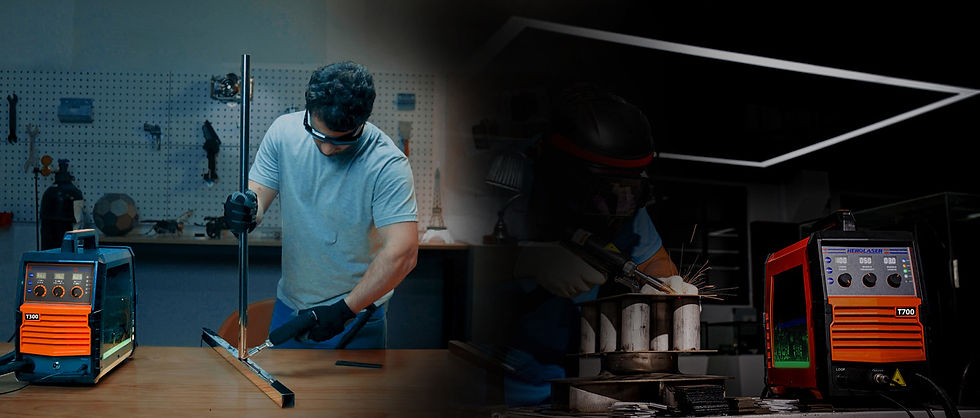Revolutionizing Metalwork: The Rise of Handheld Laser Welding Machines
- jims Mike
- Aug 4
- 3 min read
Updated: Aug 4

In recent years, handheld laser welding machines have emerged as a groundbreaking tool in both industrial manufacturing and home-based fabrication. Marrying precision, portability, and power, these devices represent a major shift from traditional arc and MIG/TIG welding techniques, offering faster operation, reduced material deformation, and minimal post-processing. As the technology matures, its adoption is expanding rapidly across sectors—from aerospace and automotive to artistic metalworking and home DIY.
Technical Overview
Handheld laser welding machines operate by generating a highly concentrated beam of light—usually through fiber laser technology—with enough energy to melt and fuse metal surfaces. These machines typically feature laser powers ranging from 500W to 3000W, suitable for materials like stainless steel, carbon steel, aluminum, and even reflective metals like brass and copper. The laser beam is delivered through an optical fiber to a handheld welding head, allowing the operator to direct the beam with precision and flexibility.
Unlike traditional methods that rely on filler materials or generate large heat-affected zones (HAZ), handheld laser welders produce narrow, deep welds with minimal distortion. Integrated cooling systems, adjustable power settings, and touch-screen controls enhance their usability, making them effective in environments requiring consistent, high-quality joins.
Industrial Applications
In industrial contexts, handheld laser welding machines are proving to be game-changers. Their primary value lies in speed, efficiency, and quality. For instance, in automotive manufacturing, these machines are used to weld car body panels, exhaust systems, and structural frames, achieving fine seam finishes that reduce the need for sanding or grinding.
In aerospace, where precision and weight reduction are critical, handheld laser welders are used to assemble lightweight aluminum and titanium components. Their ability to produce clean, repeatable welds without additional filler material enhances structural integrity and reduces component weight.
Moreover, in heavy industries like shipbuilding, construction, and oil & gas, the portability of these systems allows for on-site maintenance and repair—eliminating the need for disassembly or heavy lifting. This significantly reduces downtime and labor costs, increasing overall production efficiency.
One key advantage in industrial settings is the high energy efficiency of laser welding—often exceeding 30%—compared to arc welding, which wastes significant energy as heat. This, combined with reduced consumables and minimal need for rework, contributes to lower operational costs and more sustainable production.
Home DIY and Small Workshops
While traditionally reserved for high-budget industrial use, recent advancements have made handheld laser welding machines accessible to skilled hobbyists and small-scale fabricators. Compact models with intuitive interfaces and safety interlocks are increasingly available at competitive prices.
For DIYers, laser welding opens new possibilities in custom metal furniture design, automotive restoration, bicycle frame repair, and artistic sculpture. The precision and cleanliness of the weld make it ideal for small projects where aesthetics and finish quality matter. The lack of significant smoke, sparks, or slag also makes laser welding more suitable for home or garage use—given appropriate safety precautions.
Furthermore, these machines eliminate the need for extensive training. Unlike TIG welding, which requires considerable skill to maintain the correct arc length and filler feed, laser welding often requires only steady hand control and a basic understanding of materials and heat input.
Future Outlook
As laser source costs continue to decline and integrated software improves automation and safety, the adoption of handheld laser welding machines is set to accelerate. Expect to see more hybrid models with AI-based guidance systems, real-time quality monitoring, and integration with robotic arms for semi-automated tasks.
In both industrial and personal applications, handheld laser welding machines are ushering in a new era of flexibility, precision, and efficiency. Whether fabricating a high-performance aerospace component or crafting a custom home décor piece, these tools are transforming how we think about metal joining.



Comments